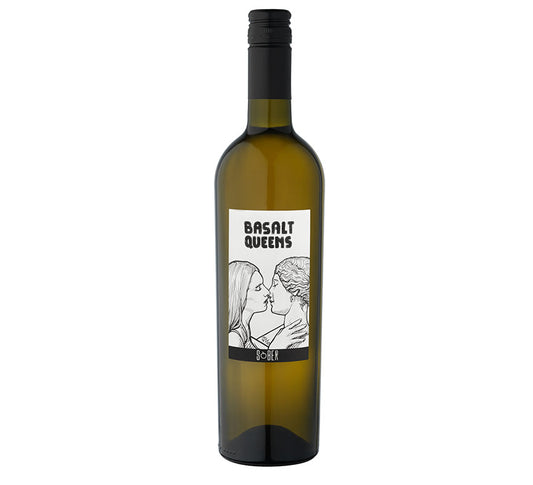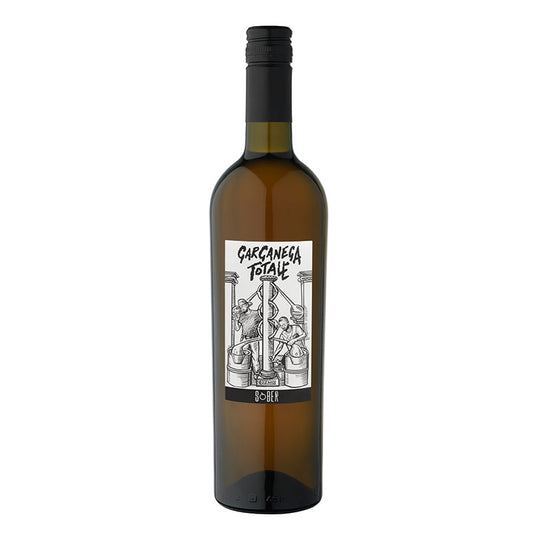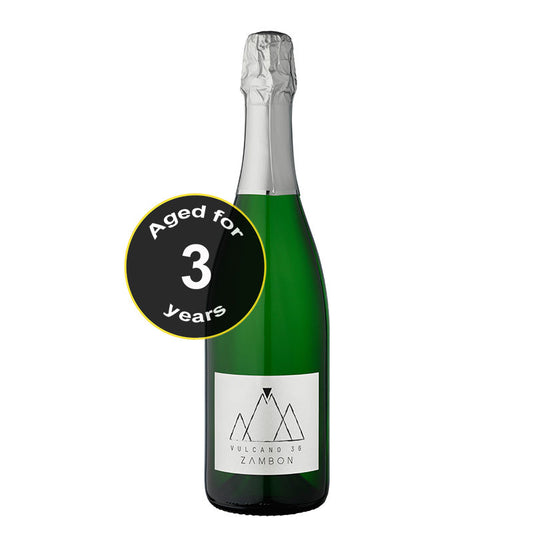Nestled on the outskirts of the charming village of Ronca' in the Alpone Valley near Verona, the Zambon Vulcano winery stands as a testament to the convergence of tradition and innovation in winemaking. This boutique, family-run establishment, under the guidance of Federico Zambon, the dedicated winery manager, is known for its unwavering commitment to "Ultra-Bio" farming methods. Federico, a fervent promoter and developer of these sustainable practices, has led the winery into the realm of "natural wine," a winemaking style that is gaining momentum throughout Italy. Notably, Zambon's methods border on the biodynamic, adding an intriguing dimension to their winemaking process. Join me as we uncover the unique journey of Federico Zambon and his winery, from pedagogy to winemaking excellence. Discover the century-long Zambon family legacy, the distinctive terroir shaping their wines, and the commitment to crafting, low intervention wines
A Pedagogue Turned Winemaker
I met up with Federico on a warm September morning just before the harvest season. He had just returned from a trip to central Italy, where he had been offering his expertise as a consultant in low-intervention, natural wine making. Seemingly in his late thirties, Federico warmly greeted me at the cantina (winery) entrance and ushered me inside to the guest and tasting area where he offered me a coffee.
"Tell me about yourself, Federico. Did you always know you'd be involved in winemaking?" I ask.
Federico smiles and shakes his head. "Far from it. I have a degree in Pedagogy and had no intention of joining the family wine business. I wanted to be a teacher!"
The Zambon winery has a history that goes back over a hundred years to the early 1900s. Back then, Federico's great-great-grandfather, Bruno Zambon, sold his white wines by the cask to local taverns, known as “osterie”, around Ronca' and wherever there was trade between the towns of Verona and Vicenza. Later in the century, the Zambon winery shifted to supplying local cooperatives for bulk local wine production. It was Federico's father, Roberto Zambon, who brought the winery into the 21st century and introduced the company's first independent labels in 2013.
"We still have some very old vines from Bruno's time," Federico shared with pride. "They're close to 100 years of age and continue to produce excellent Garganega grapes for our white Soave wine. These older plants have proven their resilience and we take care of them with the utmost dedication."
"After completing my degree, I discovered I had some free time, so I decided to lend a hand at my father's winery. He sent me to a wine fair in Vienna, saying it was just to familiarize myself with the industry. According to him, it was a way to see if I felt I could fit in, so to speak," Federico says with a smile.
“I have to say something struck me while I was in Vienna. The workshops I took part in, the people I met, I’m not sure what it was but I got the distinct feeling that I was peering into a world full of potential. I could see that wine making could be interesting and that perhaps I could make a difference. It really was a sort of revelation.”

These days Federico has a second degree in Oenology and is at the helm of the Zambon Vulcano Cantina. He has a young family and travels extensively not only to promote his wines but also as an advocate for bio-farming and low-intervention wine making.
“I launched the Zambon Vulcano project in 2016 with the intention of producing something utterly unique. I wanted to create a wine that was a clear expression of my land, its terroir, and tradition”.
“That sounds great, Federico but exactly how do you accomplish this?” I ask.
Federico smiles, as if he had me exactly where he wanted.
Terroir Tales
"Our vines find their home on a truly remarkable slice of land, graced by geological marvels. Here one can find a mix of sedimentary rocks that date as far back in geological time as the Mesozoic. Furthermore, there are volcanic soils derived from colossal outbursts of magma, unleashed by the Cenozoic Alpine orogeny. The magma flooded our local Alpone Valley, with layers of basalt rock, which, over the course of what you might call "geological time" has gracefully weathered under the Italian sun. In doing so, these layers of magma have gifted us with fertile clays, generously laden with minerals, upon which our vines feast, thrive and flourish with vigour.
Moreover, we are blessed by the climatic influence of the Lessini Hills, which hold us in their cool, temperate clasp. These ideal conditions provide the perfect backdrop for nurturing our Garganega and Durella grapes. So perfect, in fact, that sometimes, we can afford a late harvest.
Yet, there's more to this story. The Lessini Hills are a realm teeming with life, a vibrant ecosystem that exists in symbiotic harmony with our vineyards. The bees, the insects, the molds, they are all players on this magnificent stage. Each brings their unique contribution to our wines. To safeguard this delicate balance, we've embraced a philosophy I like to call 'Ultra-Bio'”.
"This is fascinating. So, only natural wine?" I ask.
Bio and Ultra-Bio
Federico leans in, his voice tinged with unwavering conviction, “No chemical additives whatsoever,” he emphasises, as if unveiling a sacred mantra. “At the Zambon Vulcano winery, we’ve embraced a resolute commitment to purity. A partnership with nature's most formidable allies: a meticulous network of cover crops (green manure) and a functioning and healthy community of insects that play essential roles in the ecosystem including ladybirds, wasps, predatory bugs and more”
"Surely, that cannot be enough to make a difference?” I ask.
“You'd be surprised,” Federico counters, his gaze unwavering.
He reveals a few weapons in his arsenal, “Kaolin, a boring blend of water and earth, is not much more than white-coloured mud. Yet, its power is remarkable. This natural, non-toxic insect repellent transforms grape clusters, providing them with a dazzling fluorescence that confuses would-be insect intruders, encouraging them to move on elsewhere”
"There’s more. Chestnut Tannin, an extract obtained from the bark of the chestnut tree, is another great gate-keeper. It keeps away fungal attacks such as mildew and botrytis. Then there's the extract of orange seeds, which also does wonders in the battle for vineyard health.” Federico continues with a list of proven, readily available natural bio products capable of stifling one or more threats to the health of his vines.

It dawned on me that Federico isn't just an advocate for bio, ultra-bio, and even biodynamic winemaking: he's also a dedicated researcher. Alluding to a respected mentor, whom he mentions briefly, Federico hints at ongoing experiments in which he's actively engaged. The results of these experiments might find their way into publication at some point, adding an another layer to his role in the world of winemaking.
"But what about your wines? Do you believe you've achieved your goals in your quest for expressing terroir?", I inquire.
"I believe we have indeed found something truly special here. Nestled within our 12 hectares of vineyards, perched at elevations ranging from 150m to 500m above sea level, we craft around 80 thousand bottles of wine annually. Our portfolio is predominantly white wine, but we also offer some exceptional red wines, too. The grape varieties we grow include Durella, Garganega, Merlot, Cabernet, and Trebbiano di Soave."
Crafting Exceptional Wines
"What also truly sets Zambon Vulcano wines apart is our commitment to a unique vinification process, especially in the creation of our still Soave and Garganega wines," Federico passionately explains.
"We place paramount importance on the aging process. We meticulously pH test our maturing wines daily, continuously monitor sugar content, and obsessively scrutinise every detail for at least a year to create a base wine that meets our standards. Some of our Soave wines spend an impressive 3 to 5 years maturing in steel or cement vats before they ever reach the market. We're proud to say we're the sole producers of Soave who take this extraordinary approach."
"At Zambon Vulcano, we currently offer no fewer than 8 labels." Federico adds.
"Our Charmat method Durello Spumante spends a minimum of one year maturing on the lees in pressurised vats, while our traditional method Durello Sparkling wine (rated ‘Superb’ by Wine Enthusiast in 2021) is never aged for less than 36 months”.
Global Presence and Future Visions
Intrigued, I inquire about the global reach of Zambon Vulcano wines.
"Our wines find their way to various corners of the globe," Federico shares.
"A significant portion is exported to the USA and Japan. In Europe, we enjoy a strong presence in France, Germany, and Denmark. We're also experiencing a growing market in Czechia,the UK and interestingly, our wines are quite popular in Taiwan. Of course, a substantial portion remains close to home, enjoyed by Italians."
I ask Federico about his vision for Zambon Vulcano in the future. "For me, the utmost priority is the quality and character of our wines, along with building and strengthening our brand recognition," he says.
As Federico hands me a glass of his Soave, I give the wine a twirl and put my nose to it to capture some aromas. Immediately the zest of lime and grapefruit and a touch of pear welcome me. Somewhere in the mix I pick up some spices maybe pepper or curry but there is also a definite hint of something different, flint perhaps or even gun powder.

"I'm always curious about wine pairings," I remark. "What dishes do you recommend with your wines?"
"For our white wines, especially our still whites, I'd go with rich, fatty fish like turbot, lobster, or eel," Federico advises.
"At our winery, we organise tours where visitors can sample our variety of natural wines, perfectly paired with dishes. I personally extend an invitation to guests to what I term a sensory experience in our vineyards and woods, I lead these myself. For those who decide to join, we stroll barefoot and embrace the biodiversity nature provides. We immerse ourselves in the aromas and flavours of ripening fruits, all while appreciating the sights and sounds of nature"
A Sensorial Journey
As we conclude our conversation, Federico shares a further glimpse into the future of Zambon Vulcano.
"Looking ahead, I also envision our winery as a hub for education and perhaps appreciation of wine culture. I’d like to expand the immersive experiences to deepen the connection between our visitors and the artistry behind our low intervention naturl wines. I believe that understanding the story behind each bottle enhances appreciation for the wine itself"
As I say goodbye to Zambon Vulcano, I feel I have witnessed a blend of tradition, innovation, and environmental care. Wine from Zambon Vulcano goes beyond being a simple drink; it's a journey, a story rooted in the land, and a testament to a man's dedication to nature and bio-farming.
Has a sip of wine ever transported you to a special place or evoked a cherished memory? Share your unique wine tales in the comments section whether they involve Zambon Vulcano or another beloved bottle. Let's create a virtual vineyard of shared experiences.
Cheers to the stories in every bottle!





